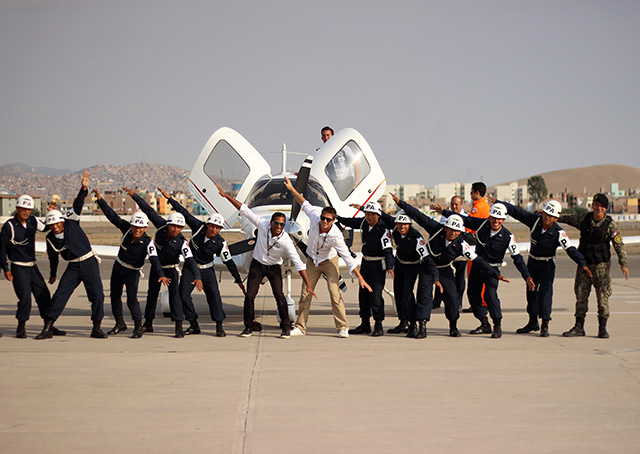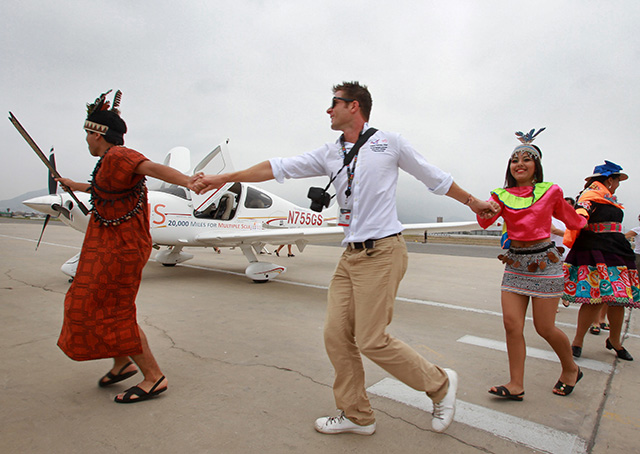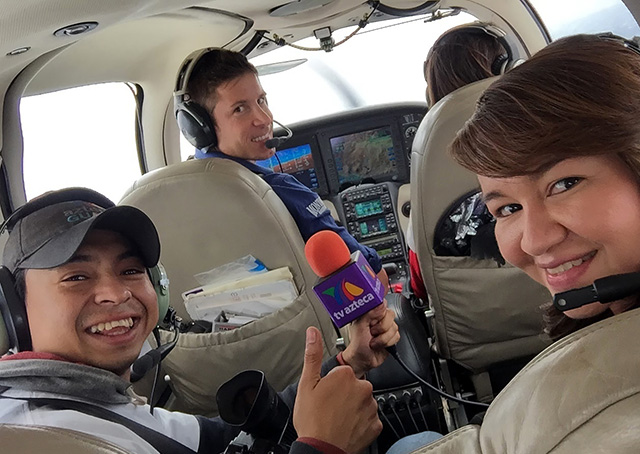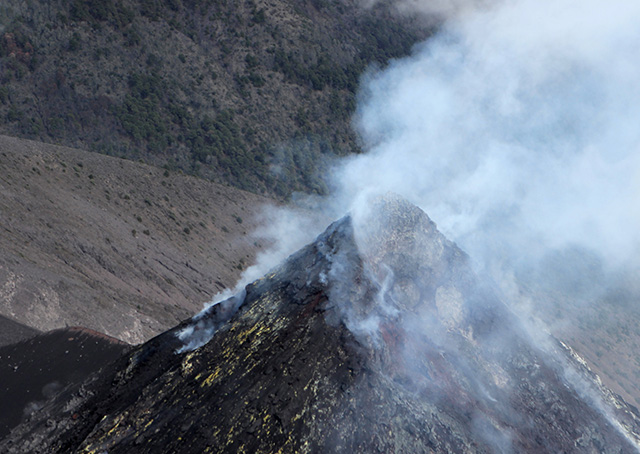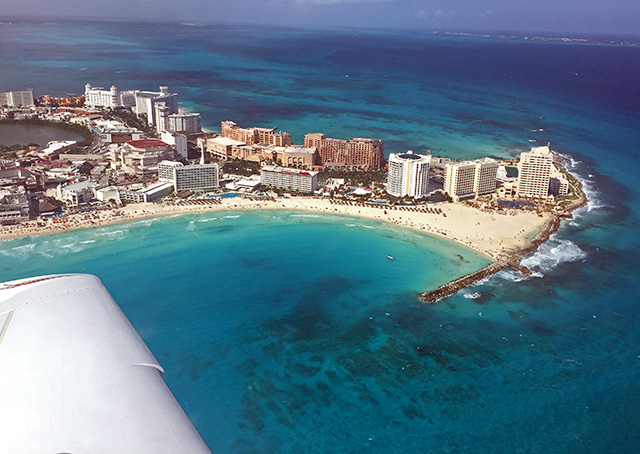A dead alternator, a broken starter, an overheating engine, no magnetic course information, and a nonfunctioning autopilot would be enough to stop most pilots considering a long cross-country flight. Add in searing temperatures, drenching downpours, hordes of mosquitos, and suspicions of drug smuggling, and the journey sounds like a recipe for disaster.
Turning around wasn’t an option for New York-based pilots Tomas Vykruta and Fouad Ahmed, who launched in Vykruta’s Avidyne-equipped Cirrus SR22 G2 in November for a two-month multiple sclerosis awareness mission flying through South and Latin America. Uruguayan pilot Santiago Pesce, 22, whose mother has multiple sclerosis, joined the crew during a stopover in Montevideo.
An early morning snow storm greeted the weary pilots upon their return to Republic Airport in Farmingdale, New York, Feb. 3, when they happily claimed success for their 20,000-mile flight.
“We knew dealing with the airports and some of the bureaucracy would be a little bad, and I thought there would be a few mechanical items,” said Ahmed, a Wall Street portfolio advisor. “We had a slew of over half dozen items we couldn’t resolve at all. We just had to keep going.”
Balancing their mechanical challenges with the expectations of dignitaries and patients waiting to greet them—some of whom traveled hundreds of miles—was at the forefront of the pilots’ minds, adding additional pressure.
“Dozens of people came in wheelchairs and waited for hours. We were conscious of that,” said Ahmed. “We visited some patients at their home in Brazil and it’s no joke, people coming to see us was a big deal. If we didn’t show up, the credibility would be lost. There wasn’t one, or two, or three events where we thought we wouldn’t make it. We had like, five to seven events that were absolute thrillers.”
The idea for the trip was to use Vykruta’s Cirrus to spread awareness of the debilitating disease while “capturing the freedom of flight for people who are wheelchair-bound and telling their stories,” Ahmed told AOPA before the trip.
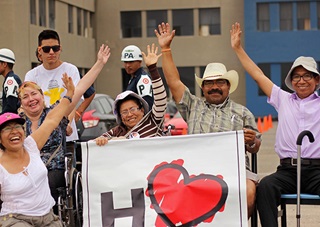 The pilots stopped in 25 cities, inviting journalists to capture moments of liberty for multiple sclerosis patients experiencing the joy of general aviation for the first time. They scheduled five to 10 flights per day at stops along the seaboards and relied on ingenuity, resources, and some good luck to keep things moving.
The pilots stopped in 25 cities, inviting journalists to capture moments of liberty for multiple sclerosis patients experiencing the joy of general aviation for the first time. They scheduled five to 10 flights per day at stops along the seaboards and relied on ingenuity, resources, and some good luck to keep things moving.
“Paraguay wanted us to come, but with our flight plans it would be like backtracking from the east coast to the interior,” said Vykruta, a Google engineer. After the team rearranged their schedule to accommodate the Paraguayan request, they were floored by unexpected hospitality in one of the continent’s most economically depressed areas. According to the United Nations, 24 percent of the country’s residents live below the poverty line. “It was a beautiful country, first of all. Then, after our flights, the FBO at the airport paid for our fuel. They topped up our tanks and it was so nice,” he said.
Vykruta said Asunción, Paraguay, was the hottest place the pilots visited. South of the equator, the December visit coincided with the dog days of summer and hot prevailing winds. “I have a picture showing 43 degrees Celsius [109 degrees Fahrenheit], it was horrendously warm.”
That’s when the aircraft's alternator decided the heat was too searing to function. “I was watching my battery slowly drain from 26 volts to 25, then 24. I finished my flights and I was keeping minimum power. I just kept flying because I didn’t want to disappoint people and the backup alternator was there. We had three TV stations live broadcasting our flights and it was a big deal,” said Vykruta. “Of course I spent the next two days trying to find someone to overhaul or fix it. Then a saint came along who used to work for the airlines. He knew somebody with a repair shop where the hangars were built totally out of wood, with no screws, and it was the craziest thing. But we got in there and made the repair.”
Ahmed, who earned his private pilot certificate in south Florida before departing the United States on the trip, had fond memories from South America’s west coast. “Peru was one of the most special stops,” said Ahmed. “We weren’t even sure we could stop there because we still didn’t have all of our permits before we landed. But 30 patients were invited, the media crews were there, native dancers were coming, a marching band was scheduled to play, and an Air Force general was ready to give a special speech when we arrived.” Photos show Vykruta and Ahmed joining Peruvians in colorful outfits for a hip-swinging conga line by the parked Cirrus.
The expedition almost halted after the pilots landed in Mendoza, Argentina, with minimum fuel and a cloud of mosquitoes descending on the ramp. They were detained while the aircraft received a “very, very thorough search.”
Officials looked through all the tools and provisions. “The customs guy asked ‘What is this?’ and he pointed to a bag of white powder in tightly sealed packages,” said Vykruta. “I thought, ‘Oh my god, the Paraguayans put drugs in our plane and now what’s this?’ So I said let me look at it. Turns out, we had this emergency kit in case we crashed in the mountains and it was food that you mix with water, labeled in Portuguese. They had to cut it and test it. When a food inspector verified it wasn’t cocaine, they let us go.”
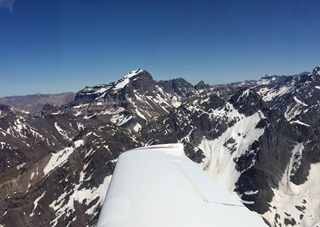 Between Paraguay and Peru, the SR22’s autopilot took a break for the remainder of the trip but the pilots handled the equipment failure in stride. “We weren’t too stressed about it,” said Vykruta, describing how he and Ahmed piloted from their Zen zone. “We can fly the Cirrus within 10 feet of altitude and one degree heading on a five hour flight without even looking at the PFD. I can do a 60-degree banked turn not looking at the PFD and keep the plane flying level. With so much hand flying it’s like instinct now,” said Vykruta.
Between Paraguay and Peru, the SR22’s autopilot took a break for the remainder of the trip but the pilots handled the equipment failure in stride. “We weren’t too stressed about it,” said Vykruta, describing how he and Ahmed piloted from their Zen zone. “We can fly the Cirrus within 10 feet of altitude and one degree heading on a five hour flight without even looking at the PFD. I can do a 60-degree banked turn not looking at the PFD and keep the plane flying level. With so much hand flying it’s like instinct now,” said Vykruta.
The approaching Andes Mountains presented the pilots with a geographical hurdle they weren’t quite prepared for. “We had to fly the Andes and the altitudes are too high for the Cirrus. Some of the peaks are over 20,000 feet and the airplane is only good to just below 18,000 feet,” said Vykruta. “I looked at a map on Google and saw a highway that passed through the Andes at around 14,000 feet. Our alternative was to fly five hours out of the way and go around Patagonia so the Google map saved us. You have to take a screen shot or have your iPhone running. Then, from 2,000 feet up, you have to pay attention to the road or you can easily lose it. The canyons in the Andes often end in dead ends and heavy winds and mountain waves complicate things. But if you plan the route ahead, oh my god it’s beautiful. We flew very close to the crash site of Uruguayan Air Force flight 571 [a 1972 crash notable for the movie Alive: Miracle in the Andes]. Some of the peaks nearby were 8,000 feet above us.”
The pilots left at dawn under VFR conditions to tackle the Andes. Ahmed added, “If it was IFR conditions, we absolutely could not fly that route.”
After surviving South America, the next challenge was Central America and Mexico. “In Mexico City we had a high density altitude and the worst landing I’ve ever done,” said Vykruta. “I had a 20 knot airspeed increase from a quartering tailwind so my ground speed was 135 knots. There was wind shear too, and when I added power nothing happened so we were still sinking. When you’re in the mountains it takes a long time for the power to kick in and I had television on board. You could tell they were a little tense. I was coming in as fast as a 737 when 80 knots is normal and I was afraid the tires were going to pop. After five flights I said, ‘No more, I can’t do this anymore,’ and we called it a day. With that tailwind, those were the most stressful landings on the whole trip.”
By the time they made it to Mexico City, the starter labored to crank the 310-horsepower Continental to life. Sometimes the starter pinion would spin and engage the engine and other times it would spin without moving a blade. “We had somewhat of a broken plane, so if we couldn’t start it we knew we couldn’t fly the patients or the media,” said Ahmed.
The pilots split up to call all the local Mexico City flight schools and check on replacement aircraft for the short familiarization hops. They quickly found that all the rental aircraft were booked for lessons. The mission was falling apart with more than 60 multiple sclerosis patients waiting to experience freedom from the bonds of their wheelchairs.
“I spoke to the owner of a school and when he said he was sorry but he was booked up, I said, ‘Sir, I’m sorry, but I don’t care, this is a huge humanitarian trip.’ He looked at our work and was so impressed that he canceled all of the school’s reservations that day and gave us the planes 45 minutes before the event. One was even booked for an engagement proposal,” said Ahmed.
The team had an impressive setup on the ramp with the white Fly for MS Cirrus flanked by a pair of Cessnas. “We had a big announcement and said that we decided to get all three airplanes to accommodate such a large crowd,” said Vykruta. “When that flight school owner saw the turnout, he said the whole deal was on the house.”
The crew made the most of it even when attendance was sparse at some stops.
“We didn’t have any patients in Santiago, Chile, so I gave the CNN reporter a flight lesson and made her fly the whole route and she loved it,” said Vykruta. “The camera guy was getting sick in the back seat though.”
Guatemala was a highlight for Vykruta. He piloted the Cirrus past an active volcano, mindful of the smoke belching from its crown and the hazardous ash. “You have to stay away from the volcanic ash and be aware the sulfur could adversely affect an engine’s combustion so you lose power for a little while before you fly out of there. It was the coolest moment of my flying career,” said Vykruta. When he realized how small the aircraft was compared to the volcano’s power and sheer enormity, “I felt like we weren’t supposed to be there and it’s hard to put into words.”
 The trip raised awareness for multiple sclerosis and donations covered the roughly $60,000 to $65,000 cost of the excursion. They have about $10,000 left over for future projects and archival of the thousands of images and lifetime memories, said Vykruta.
The trip raised awareness for multiple sclerosis and donations covered the roughly $60,000 to $65,000 cost of the excursion. They have about $10,000 left over for future projects and archival of the thousands of images and lifetime memories, said Vykruta.
“Since we raised less than our target [$75,000], we made it a budget trip and shared rooms to save more money. We came up with $10,000 or so in the bank account and we’ll use to put our content together for the website and on the Cuba trip. March 10 is soft-circled at the moment but we are looking for help in Florida,” said Ahmed.
The pilots said the attention they received in South America was extraordinary, but it wasn’t practical to sustain. “We need to figure out the future of Fly for MS, whether it’s smaller and concentrated in local cities or expanded globally,” said Ahmed. “One of the ideas that came out of this whole journey is less aviation-related but more disease-related. The drugs cost about $20,000 to $30,000, while the average income is $8,000 to $11,000 per year. Without government support, some of these patients can’t access medicine at all and have to degenerate. There’s a lot of stuff they have to cope with and a cheaper and more practical solution might include psychotherapy.”
“There's one dark truth we try to gloss over, but it's there,” Vykruta wrote in a follow-up email. “For some of the patients we fly, the flight is sort of a final dying wish. Many multiple sclerosis patients will live a long time but not all. We know of at least one person we flew who died recently. He sat right next to me in the co-pilot seat just weeks ago and now he is dead. It’s very sad, but it is nice that we brought him a final bit of joy and hope before he passed.”
